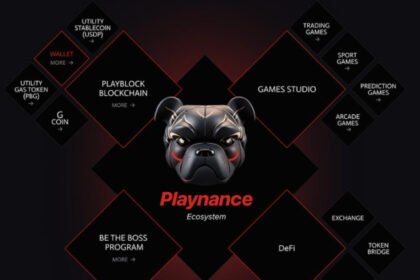In the rapidly evolving digital landscape, Web3 has emerged as a revolutionary concept that promises to reshape the way we interact, transact, and engage with the online world.
As a powerful blend of blockchain technology, decentralized applications (DApps), and cryptocurrencies, Web3 offers immense potential for individuals, businesses, and organizations. However, convincing mainstream players to embrace this transformative technology can be a challenging task. In this article, we will delve into the compelling reasons why mainstream players should switch to Web3 and explore effective strategies to persuade them to take the leap.
Understanding the Power of Web3
Unprecedented Transparency and Security
Web3’s underlying technology, blockchain, ensures unprecedented transparency and security in digital transactions. By utilizing decentralized networks and cryptographic protocols, Web3 eliminates the need for intermediaries, reducing the risk of fraud, data breaches, and manipulation. Mainstream players can benefit from enhanced security measures and regain control over their digital assets.
Empowering User Ownership and Control
Web3 enables individuals to have true ownership and control over their digital assets, data, and online identities. Through self-sovereign identity systems, users can authenticate themselves without relying on centralized authorities, fostering a sense of empowerment and autonomy. Mainstream players can tap into this paradigm shift to build trust and loyalty among their customers.
Leveraging the Power of Smart Contracts
Smart contracts, a key feature of Web3, enable self-executing agreements without the need for intermediaries. These programmable contracts facilitate automation, efficiency, and transparency, revolutionizing various industries such as finance, supply chain, and real estate. Mainstream players can streamline their operations, reduce costs, and enhance collaboration by leveraging the power of smart contracts.
Persuasive Strategies to Drive Adoption
Education and Awareness Campaigns
To convince mainstream players to switch to Web3, it is crucial to invest in comprehensive education and awareness campaigns. By highlighting the potential benefits and addressing concerns, these campaigns can help debunk misconceptions and foster a deeper understanding of Web3’s capabilities. Providing real-world use cases and success stories can be particularly impactful in demonstrating the value proposition of Web3.
Collaboration and Partnerships
Collaborating with established industry players and thought leaders can accelerate the adoption of Web3. By forging strategic partnerships, mainstream players can tap into existing networks and leverage their expertise to navigate the complexities of Web3 integration. Collaborative projects and joint ventures can showcase the benefits of Web3 in practical applications, driving wider adoption.
Incentives and Rewards
To encourage mainstream players to embrace Web3, offering incentives and rewards can be a powerful motivator. These can come in the form of tokenized assets, loyalty programs, or exclusive access to premium features. By demonstrating the tangible value and rewards associated with Web3 adoption, mainstream players are more likely to consider making the switch.
User-Centric Design and Seamless Integration
One of the barriers to adoption is the complexity and unfamiliarity surrounding Web3 technologies. Mainstream players can overcome this hurdle by focusing on user-centric design and providing seamless integration pathways. User-friendly interfaces, intuitive wallets, and simplified onboarding processes can make the transition to Web3 more accessible and appealing to a broader audience.
Overcoming Challenges and Addressing Concerns
Scalability and Performance
As Web3 continues to evolve, scalability and performance remain critical challenges. Mainstream players may be hesitant to adopt Web3 due to concerns about slow transaction speeds and network congestion. However, ongoing research and development efforts are focused on addressing these issues, with solutions such as layer 2 protocols and sharding being explored. Communicating these advancements and highlighting the long-term scalability roadmap can alleviate concerns.
Regulatory Landscape and Compliance
Navigating the regulatory landscape surrounding cryptocurrencies and decentralized technologies can be complex. Mainstream players may have concerns about compliance, legal implications, and potential risks. Collaborating with regulatory bodies, industry associations, and legal experts can provide clarity and guidance on compliance requirements, ensuring a smoother transition to Web3.
User Experience and Familiarity
To gain mainstream adoption, Web3 applications must provide a seamless user experience comparable to traditional centralized platforms. Enhancing user interfaces, simplifying processes, and providing intuitive user guides can bridge the familiarity gap and instill confidence in users. By prioritizing user experience, mainstream players can make Web3 more accessible and appealing to a broader audience.
In conclusion, persuading mainstream players to switch to Web3 requires a comprehensive approach that combines education, collaboration, incentives, and user-centric design. By highlighting the unprecedented transparency, security, and control offered by Web3, mainstream players can unlock new opportunities and drive innovation. Overcoming challenges and addressing concerns through ongoing research, regulatory collaboration, and improved user experiences will be pivotal in accelerating Web3 adoption. Embracing Web3 today can position mainstream players at the forefront of the digital revolution and ensure long-term success in the evolving digital landscape.









